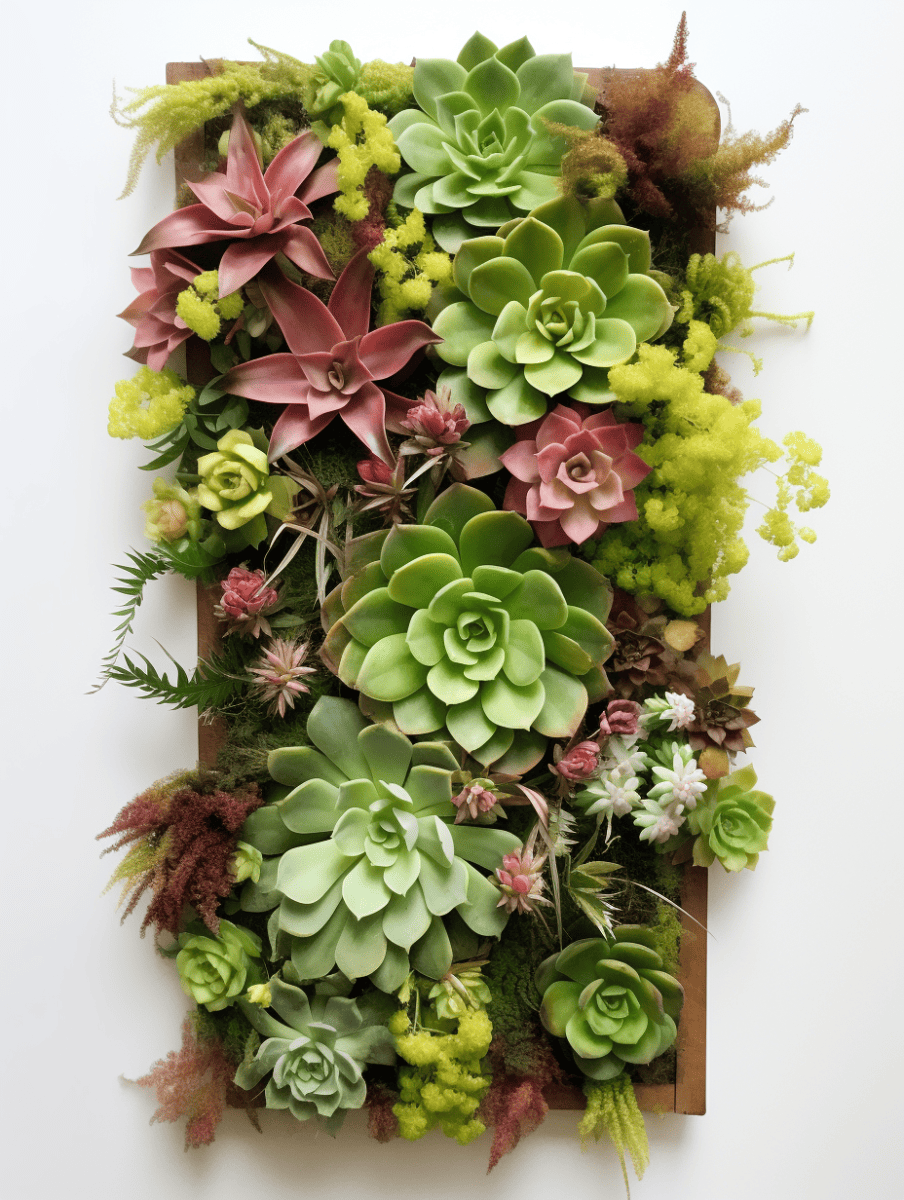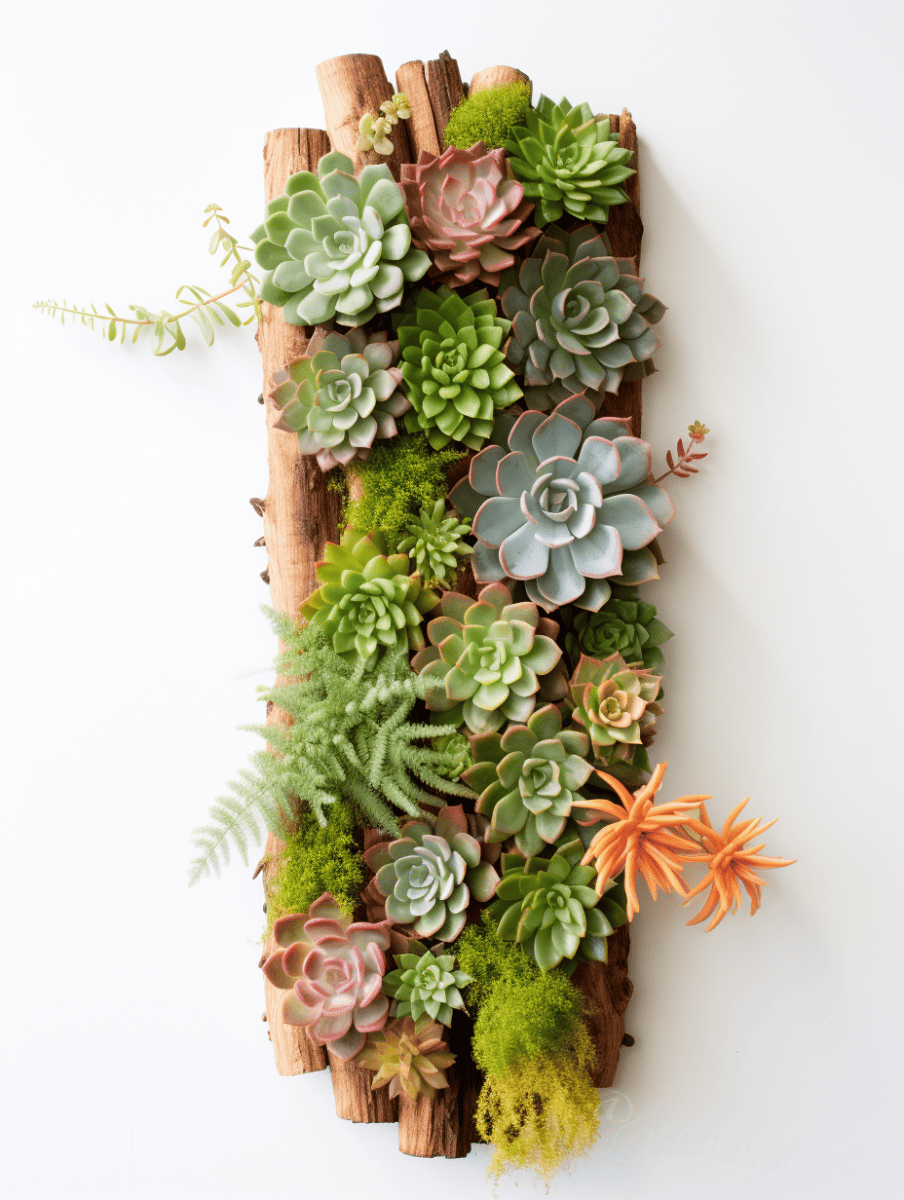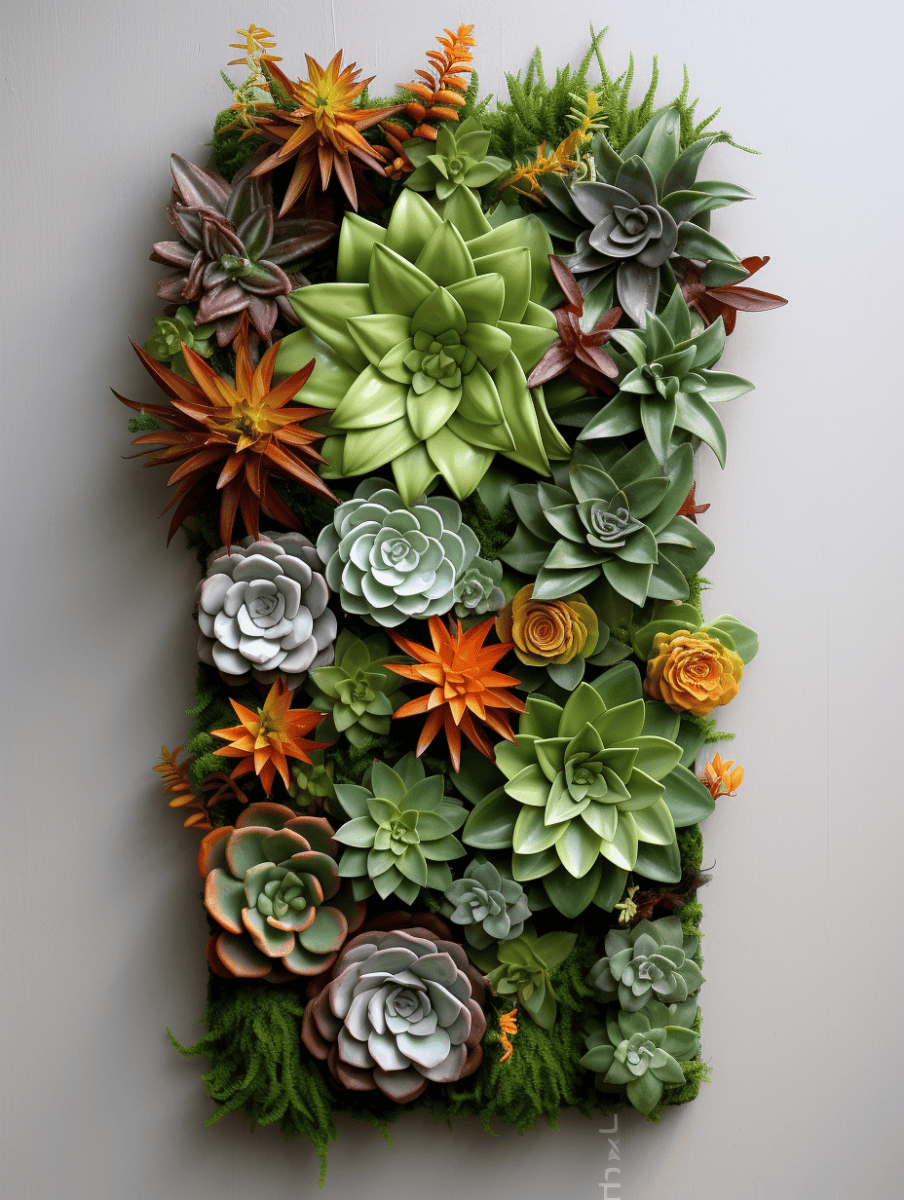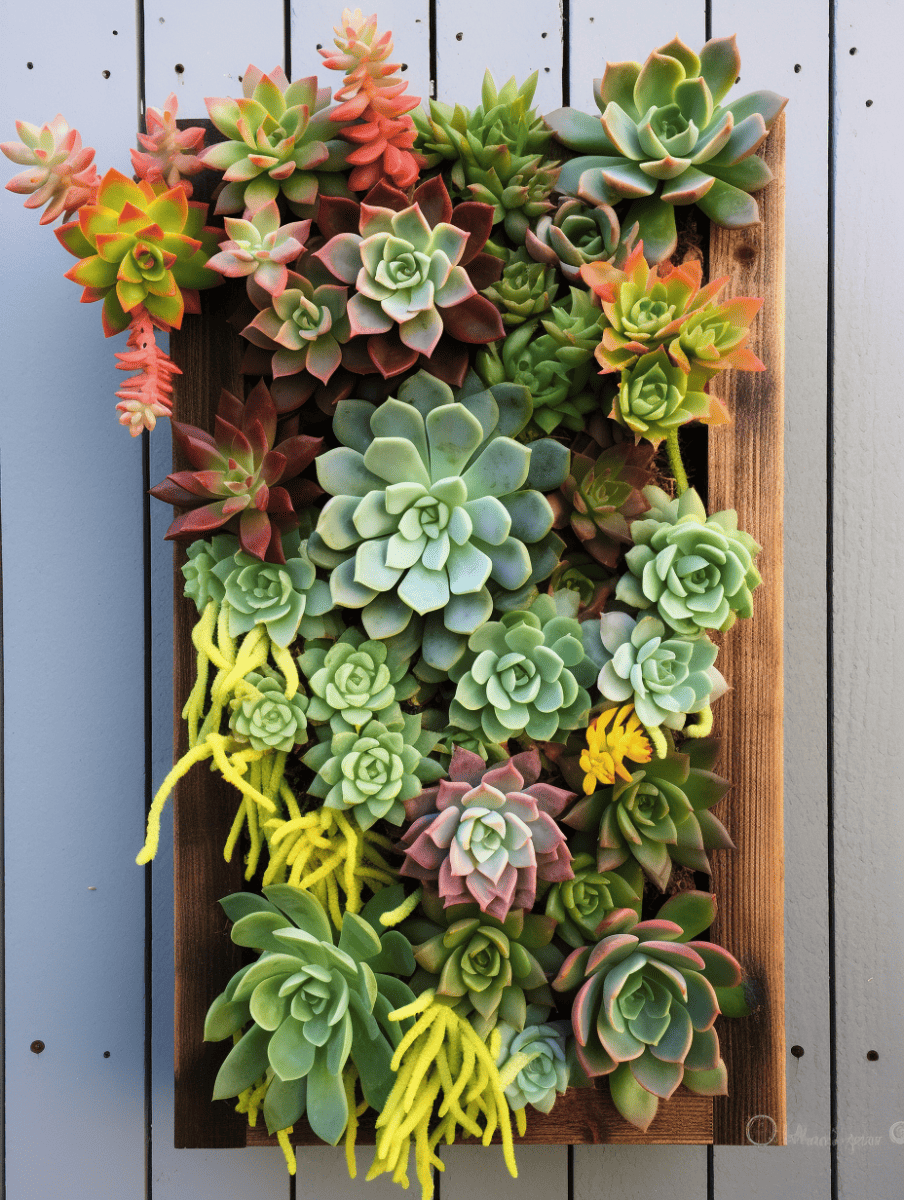Succulents are so lovely that you might even want to put them on a wall for display! How do you make a living wall using succulents? We have the answers for you!
We'll take you through how to create a succulents living wall, what succulents to use and even share some spectacular examples to inspire you!
In order to have a living wall with succulents, you’ll need a wall planter. You can either buy the planter already assembled, or you can have some fun and DIY one.
If you would like to learn more about both options, keep reading, as I’ll break each one down.
Using Succulent Wall Planters
You’ll need a wall planter to place the succulents in, whether inside or outside. There are options to purchase them online, but you can also assemble your own wall planter from a picture frame and some chicken wire.
Wall Planters Online
Amazon has great options for planters of all sorts, and it even has two really great living wall planter options for succulents.

Or check out this wodden wall planter
Creating a DIY Living Wall
If you are feeling creative, you can DIY your own planter. You can choose to completely create it from scratch, or you can use a picture frame to help you.
If you decide to create the entire planter from scratch, you'll need to start with the frame. Decide how long and how wide you want your frame to be, and purchase the appropriate lengths of wood. Below is the entire list of supplies you'll need.
- 4 equal sizes of wood
- 4 corner braces
- Plywood
- Wire chicken netting
- Nails (preferably Galvanized Nails)
- Landscape Fabric or Plastic Bag (optional)
- Soil
- Hammer
- Staple Gun
- Wire Cutter
- Glue
You'll start off by joining the 4 equal pieces of wood with glue. Cedarwood is a good choice for the frames because it's non-toxic. Brace each inside corner with the corner braces to make the frame sturdier.
Any nail will do, but galvanized nails have a protective zinc coating that protects them from rusting and corrosion. You'll need a piece of plywood large enough to cover the back of the frame, and you'll attach it to the frame with both glue and nails.
So now, what goes inside your planter?
You can choose whether or not to line the inside of the frame with either landscape fabric or a plastic bag. Lining the inside will help ensure the planter is waterproof, but this is an unnecessary step if the planter is going to be outside.
From here you'll pack in your soil tightly so that the soil isn't loose. Next, you'll stretch the chicken wire across your soil and attach the wire to the frame with the staple gun.
Using your fingers or a stick, poke small holes in the soil and place the roots of the succulents into these holes. For bigger succulents, you may have to cut some of the chicken wire with a wire cutter to make more room. Arrange the succulents as you desire.
Lightly spray the planter with water. The planter will have to lie flat for 4 to 12 weeks so that the roots of the succulents have time to establish themselves.
If you decide to use a picture frame to help you, then you won't have to create the frame from scratch, and you won't need the corner braces.
Most of the supplies will be the same, though you'll need a frame-hanging kit. The glass of the frame will have to be removed, and chicken wire will be attached to the back of the frame with the staple gun.
You'll need a shadow box to attach to the back of the frame. You can buy a shadow box, or you can create it yourself with a piece of plywood and pieces of wood.
On the back of the shadow box, you'll attach the hanging wire from the hanging kit. You'll want the screws placed higher up so that the frame doesn't lean forward and spill soil.
Attach the frame and shadow box with glue, and be careful to wipe away any excess glue. With your fingers or a stick, poke small holes into the soil and poke your succulents in. Like with the other DIY planter, the succulents will need 4 to 12 weeks for their roots securely settle.
Recommended Succulents
Succulents that are flatter will work better for a living wall because they won't protrude out as much and, therefore, don't face the risk of falling out. Below are the recommended types of succulents for living walls.
Window Haworthia Succulent
Known for its translucent leaves, it adds a unique, almost gem-like quality to any living wall.
Graptopetalum Superbum
This succulent features rosettes with pale grey to pink leaves, offering a soft, pastel touch.
Sedum Hybrid 'Golden Glow' Succulent

Corpuscularia lehmannii - Ice Plant
Its angular, icy-blue leaves create a striking geometric pattern, perfect for adding texture.
Echeveria 'Strawberry Almond'
With pinkish-red leaves resembling flower petals, it brings a burst of color and charm.

See this beautiful echeveria on Amazon
Lithops
Resembling small stones, these 'living stones' add an intriguing, almost whimsical element to the arrangement.

A collection of lithops on Amazon
String of Pearls (Senecio rowleyanus)
This succulent is characterized by its long, trailing vines adorned with round, bead-like leaves, perfect for creating a cascading effect in a living wall.
Need some more inspiration?
The idea is to pick colors that suit your tastes and create a look that's appealing to you.
The great thing that makes succulents so perfect for vertical gardening is that they can really make the most of small space.
Design-wise, that means you can create dense, rich surfaces with various textures and colors. We've used AI to create some great examples to inspire you.







These are all beautiful examples of how a living wall of succulents can turn out! The different types of succulents embedded truly give this living wall a unique look.
Caring for the Succulents
The living wall of succulents needs to be in an area where it receives an adequate amount of sunlight - at least 6 hours a day. Succulents are desert plants, so they enjoy a warmer atmosphere.
The succulents only need to be watered when they start getting dry. With a spray bottle, you can simply spray them once a week, or as needed.
A good habit to get into is water the entire planter once a month, though you'll need to be careful of overwatering, as the planter doesn't have a way to drain the excess liquid.
If you find that you need to drain the planter, you can drill a few holes in the bottom of the planter to help with drainage.
Living walls for succulents are fairly easy to make, and they don't require many materials. If you find that you'd rather buy an already assembled planter, the online options are just as good!
The great thing about succulents is that there are so many varieties, and you can mix and match them to create a living wall that fits what you want. The outcome will always be beautiful.





